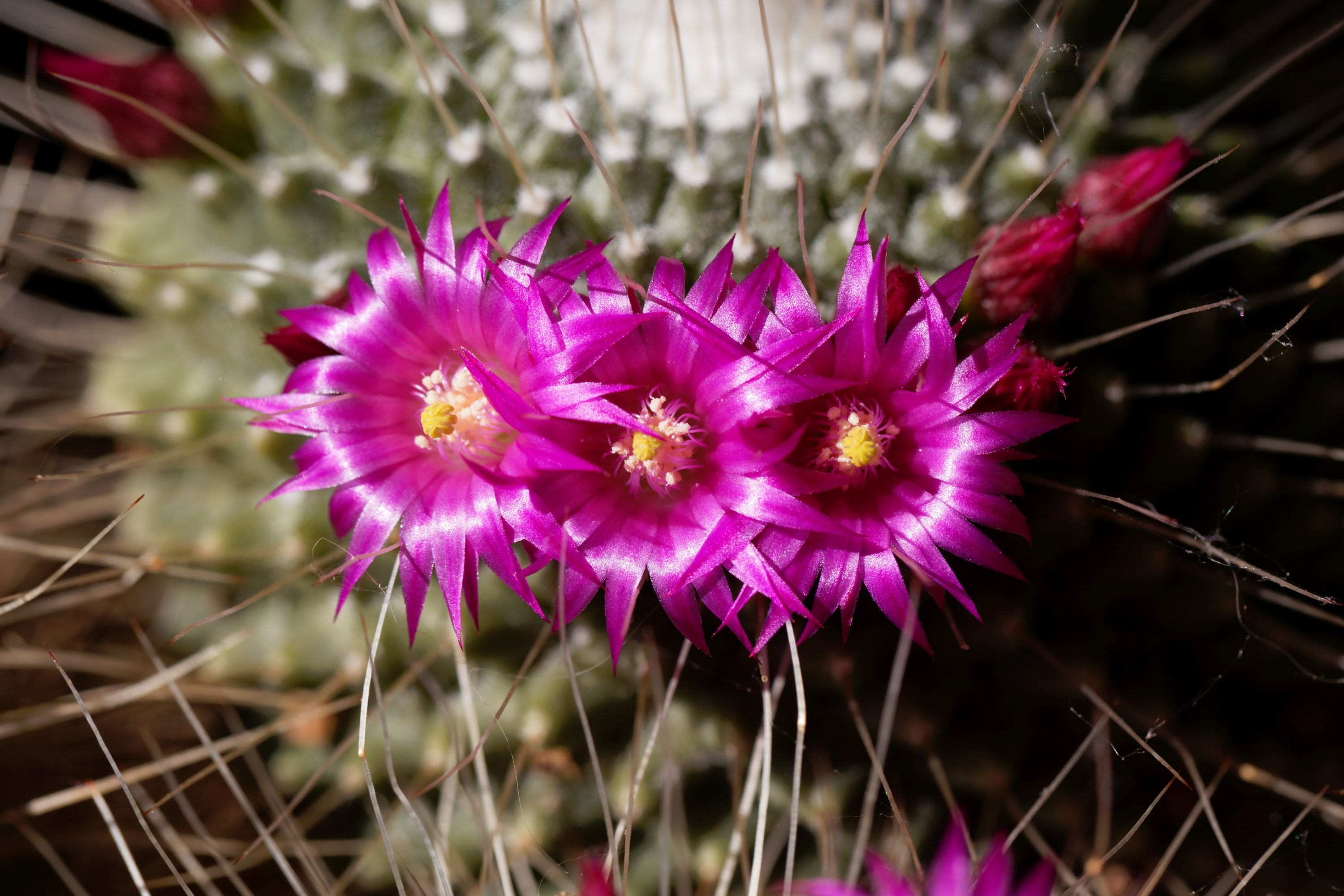Spiny pincushion cactus
(Mammillaria spinosissima)

Description
Mammillaria spinosissima, also known as the spiny pincushion cactus, is a species of flowering plant in the cactus family Cactaceae, endemic to the central Mexican states of Guerrero and Morelos, where they grow at elevations of approximately 1,600 to 1,900 metres (5,200 to 6,200 ft). The species was described in 1838 by James Forbes, gardener of the Duke of Bedford. Botanist David Hunt collected a specimen in 1971, when he located one near Sierra de Tepoztlan, Mexico. The cylindrical and elongated plants grow up to 30 centimetres (12 in) tall and 10 centimetres (3.9 in) wide. They reach full height after five to ten years. The spines are red-brown or white, with cream-colored radials and pink, funnel-shaped flowers that grow in a ring around the apex of the stem to approximately 2 centimetres (0.79 in) long. It grows low to the ground in solitary or in clusters, and its flowers produce generally bright red berries that are club-shaped, smooth, and juicy. M. spinosissima thrive in well-drained soils that are sandy or loam, with a pH ranging from acidic to neutral. They prefer low humidity and full, filtered sun. Plants are typically watered once every two or three weeks, and kept nearly dry during the winter months. They require no pruning and make good patio and container plants. They are relatively disease resistant, but susceptible to pests such as mealybugs. Synonyms of M. spinosissima include Mammillaria centraliplumosa, Mammillaria haasii, and Mammillaria virginis.
Taxonomic tree:







